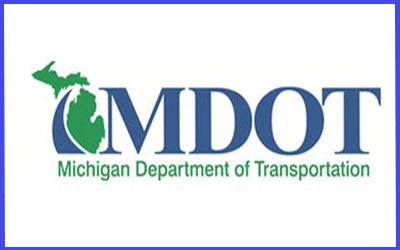
FOR IMMEDIATE RELEASE
September 15, 2022
Gov. Whitmer Unveils Future Mobility Plan to Ensure Michigan Remains Global Leader in Future Mobility
MI Future Mobility Plan coordinates efforts across multiple state departments and agencies to address challenges and support growth in mobility and electrification industry
LANSING, Mich. – Today, Governor Gretchen Whitmer announced a new statewide strategy to ensure Michigan remains the global leader in the future of mobility. The MI Future Mobility Plan maps out a comprehensive strategy that addresses future mobility challenges by growing the mobility workforce, providing more accessible transportation infrastructure, and developing innovative mobility policies.
“Michigan put the world on wheels, and remaining the global leader in mobility and electrification depends on our ability to work together proactively to address future challenges,” said Governor Whitmer. “The MI Future Mobility Plan presents a unified approach and strategy to grow Michigan’s economy, invest in our workforce, and empower communities across the state through responsive policy and programming that prepares us for the future. It includes several goals for us to work towards and brings together partners across state government to get it done. Since I took office, we have announced 25,000 good-paying auto jobs and multi-billion-dollar investments from world-leading companies in electric vehicles, chips, and batteries. We have the momentum, and this plan will help us keep moving forward.”
“Michigan has a long heritage of success in automotive manufacturing and innovation,” said Trevor Pawl, OFME’s Chief Mobility Officer. “As the mobility industry continues to grow and evolve, we are laser-focused on leveraging our state’s talented workforce, ecosystem and available business resources to make Michigan a place where multi-modal mobility solutions are born, and companies can find long-term success and support.”
In developing the collaborative mobility plan, OFME and CFME worked closely with experts in the Michigan Departments of Labor and Economic Opportunity (LEO); Environment, Great Lakes, and Energy; Natural Resources; Treasury; Insurance and Financial Services; Michigan State Police; Michigan Economic Development Corporation; and Michigan Public Service Commission.
Broken down into three key pillars, the MI Future Mobility Plan lays out specific goals that will help create a stronger state economy through safer, more equitable and environmentally sound transportation for all Michiganders:
Pillar 1: Transition and Grow our Mobility Industry and Workforce
- Goal: Become a top three state for employment growth in mobility and automotive focused industries, creating 20,000 new jobs by the year 2026.
- Goal: Add 7,000 workers with mobility credentials by 2030, while increasing diversity of the sector’s workforce.
- Goal: Ensure Michigan maintains a resilient automotive and parts manufacturing sector that supports at least 170,000 jobs through 2030.
Pillar 2: Provide Safer, Greener and More Accessible Transportation Infrastructure –
- Goal: By 2030, deploy 100,000 electric vehicle chargers to support 2 million electric vehicle and improve access to H2 infrastructure.
- Goal: Maintain at least 80% of electric vehicle charging off-peak to minimize impacts to the grid.
- Goal: Reduce congestion and traffic crash rates statewide by 2026.
- Goal: Provide residents with consistent access to mobility-as-a-service options across Michigan’s 77 transit agencies by 2025.
Pillar 3: Lead the World in Mobility and Electrification Policy and Innovation
- Goal: Maintain #1 state ranking for mobility and electrification research and development spending.
- Goal: Become a top 10 state for growth in venture capital funding by 2026.
- Goal: Become a top 10 state for federal investments related to mobility and vehicle electrification.
- Goal: Lead the nation in electric and automated vehicle friendliness through responsive policies.
Michigan’s performance within these pillars will determine whether the state can build an inclusive economy that secures its position as a global mobility powerhouse, supports increased household income and creates more high-wage, high-skill jobs.
“This strategy is a great step forward for our state and its efforts to remain the global leader in mobility,” said Glenn Stevens Jr., executive director of MICHauto and vice president of automotive and mobility initiatives at the Detroit Regional Chamber. “The honest assessment of the industry’s strengths and areas of opportunity paired with direct action items will bolster the state’s competitiveness through the industry’s ongoing evolution.”
The mobility plan builds on progress and successes the state has already seen under Governor Whitmer’s leadership including:
- Over 25,000 new jobs in the automotive industry and maintained Michigan’s position as America’s #1 in automotive research and development and manufacturing.
- The largest education investment in state history to prepare future generations of Michiganders for careers in mobility and electrification.
- A path to carbon neutrality by 2050, which includes a worry-free, statewide electric vehicle charging network before 2030.
- Fixing Michigan’s roads, while also futureproofing our infrastructure with a first in the nation self-driving vehicle corridor, smart parking lab and wireless charging corridor for electric vehicles.
- Leading national mobility policy conversations with the creation of the first five-state compact in the Midwest to focus on electric vehicle adoption.
“The transformation towards mobility and electrification creates exciting new opportunities for Michigan’s workforce and economy,” said LEO Director and CFME Chair Susan Corbin. “The State is working hard to prepare Michiganders with the skills and talent needed to fill high-demand careers of the future in the mobility sector and beyond.”
While global economies continue to transform, big mobility challenges remain as Michigan faces competition for new mobility jobs and research and development and risk capital investments, transitions in its workforce from traditional internal combustion engine skillsets to emerging autonomous vehicles and electric vehicle skillsets, transitions in its infrastructure and grid from serving internal combustion engine vehicles to also serving electric vehicles, autonomous vehicles and next generation transit at scale and ensures that state regulatory environments and resources keep pace with the global market.
To learn more about the MI Future Mobility Plan Economy plan, visit here.
|







 Beginning in late September through early October, anglers throughout the state are asked to be on the lookout for Michigan Department of Natural Resources personnel conducting walleye recruitment surveys – a tool that helps fisheries managers determine how many walleye either were produced naturally or survived stocking in 2022 (commonly referred to as a given year’s “young-of-year” fish).
Beginning in late September through early October, anglers throughout the state are asked to be on the lookout for Michigan Department of Natural Resources personnel conducting walleye recruitment surveys – a tool that helps fisheries managers determine how many walleye either were produced naturally or survived stocking in 2022 (commonly referred to as a given year’s “young-of-year” fish).


